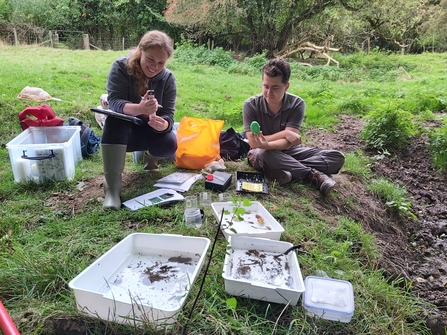The funding will be spent on supporting and expanding our current practical work, initially in the Upper Lugg catchment in the north of the county, as well as funding our ongoing campaigning and advocacy.
We are currently conducting river surveys and monitoring on the Lingen and Lime brooks, tributaries of the River Lugg. Here, we are particularly focusing on freshwater invertebrates, such as mayfly nymphs, as their levels of abundance offer a brilliant insight into the general health of a river.

